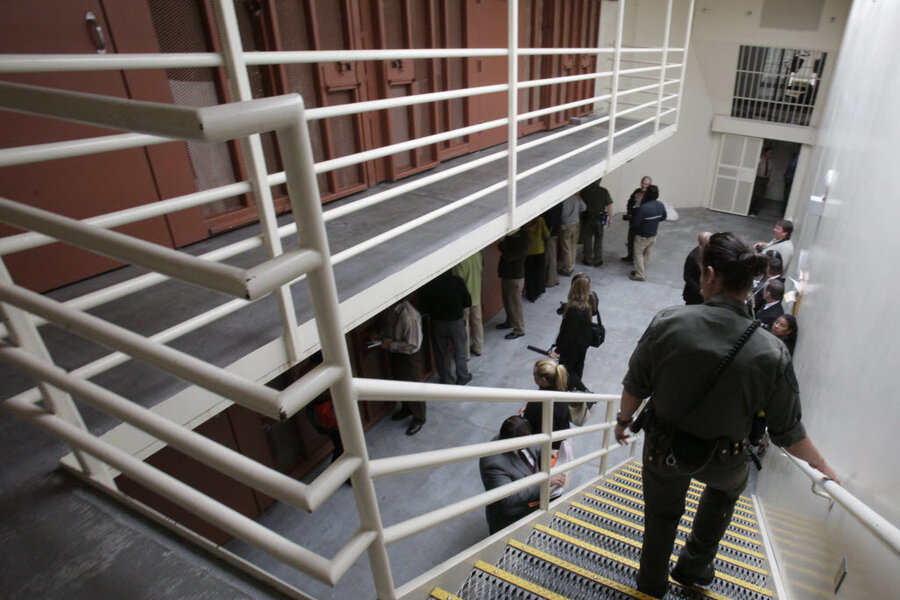Justice Department plan to free thousands of inmates is just the beginning
Loading...
Some 6,000 drug offenders in federal prisons around the country will be set free at the end of the month, the Washington Post reported Tuesday afternoon, as part of punishment reductions put in place by the US Sentencing Commission last year which have been made retroactive.
The mass release, the largest in federal prison history, represents a significant step in President Obama’s efforts to reform the criminal justice system, a mission now picking up steam with both parties in Congress.
The “Drugs Minus Two” policy from the US Sentencing Commission, an independent agency responsible for determining sentences for federal crimes, went into effect last November, giving the Department of Justice a year to prepare for the release, the Post’s Sari Horwitz reports.
Most former inmates will be supervised in programs such as halfway houses, and roughly one in three are foreign nationals who will immediately be deported.
Critics are concerned about an explosion of crime, particularly considering that nearly half of the nation’s 100,000 drug offenders in federal prisons may eventually qualify for early release.
The Justice Department points to a study arguing that recidivism rates do not vary significantly between prisoners with early release and those who serve a full sentence.
They also emphasize that early release is not automatic; eligible inmates will have to petition a judge. Early releasers are still serving “substantial prison sentences,” Deputy Attorney General Sally Yates told the Post.
Prison reform advocates frequently point to social justice ideals as their motive, but practical concerns also play a role: there’s simply no room for all the people America jails. At 724 prisoners per 100,000 people, it’s the highest rate in the world.
Only recently has locking people up become such an American tradition. As Ms. Horwitz reports, the US population has grown by a third since 1980, while federal prison populations jumped by 800 percent, putting them 40 percent over capacity. It’s an expense that threatens other Justice priorities, from fighting violent crime to human trafficking, Department officials told Horwitz in February.
“We’re at a moment where some good people in both parties, Republicans and Democrats, and folks all across the country are coming together around ideas to make the system work smarter, make it work better,” Mr. Obama said in July, announcing a complementary effort to commute sentences for some nonviolent drug offenders.
His claim that folks “are coming together” is now bolstered by a bipartisan criminal justice reform bill presented to Congress this week, which “its authors hailed not only as the most important federal justice overhaul in a generation, but also as an example of how Congress can work when lawmakers are willing to compromise,” says The New York Times.
The bill seeks to make prisoners’ sentences more proportionate to their crimes, chipping away at "tough on drugs" measures now deemed excessive, and would outlaw juvenile solitary confinement.








